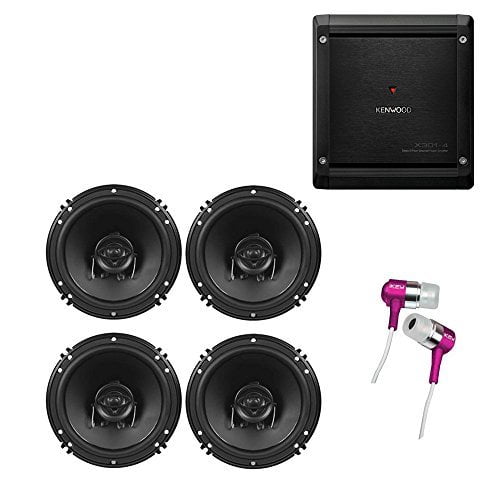

- KENWOOD EXCELON 5 CHANNEL AMP DRIVER
- KENWOOD EXCELON 5 CHANNEL AMP FULL
Signal to Noise Ratio: 80 dBA (measured at 1 watt into 4Ω). Power Output: 50 watts RMS x 4 + 300 watts RMS x 1 into 4Ω. CEA-2006 standards allow consumers to compare car amplifiers and receivers under the same conditions (apples to apples). Signal-to-Noise ratio is measured in weighted absolute decibels (dBA) at a reference of 1 watt into 4 ohms. KENWOOD EXCELON 5 CHANNEL AMP FULL
The criteria for measuring power uses a DC input voltage of 14.4 volts and the RMS power output is measured over a frequency range of 20 Hz to 20 kHz (for full range amplifiers), with 1% or less Total Harmonic Distortion plus noise (THD+N). This voluntary standard advocates a uniform method for measuring an amplifier's RMS power output. FeaturesĬEA-2006 Compliant: CEA-2006 is a system of testing and measurement for mobile audio amplifiers. We stand firmly behind the eXcelon products with a 2 Year Warranty.
KENWOOD EXCELON 5 CHANNEL AMP DRIVER
Receivers feature innovative technologies such as advanced smartphone connectivity and driver safety options. Maximum precision is achieved with top-end components for true musical indulgence. For instance, if you have a 1000-watt amplifier and four speakers that have a 300-watt requirement per speaker, the amplifier will not be able to produce the power needed to run the speakers.KENWOOD eXcelon products are specially developed to provide the ideal listening experience.

Therefore, when shopping for an amplifier, it is important to check the amp’s maximum wattage. Wattage: All amps have a wattage rating.

Therefore, when shopping for an amplifier, make sure it supports amplifier inputs. With this kind of setup, you won’t be able to connect your amp to your head unit.

Some stock car head units don’t come with preamp inputs. If you are using an aftermarket head unit, it will have RCA preamp inputs that make it possible to connect the receiver to your vehicle’s amp directly.
Amplifier Inputs: Amp inputs are what transmit the signal from your vehicle’s head unit to the amplifier. Every amp and subwoofer will have an RMS rating on the product check this rating. While manufacturers are notorious for bragging about the peak power rating on amplifiers, the peak power rating isn’t the ideal feature to watch when shopping for an amplifier. RMS: This is the Root Mean Square: the amount of continuous power measured in watts in which a specific amplifier can produce. Normally, an amp can run at maximum peak power for a short time before it malfunctions. Peak Power: The peak power is the highest power an amp can put out before shorting out. Also, you’d have to buy the bass adjustment for the fifth channel separately. It’s larger than most amplifiers and that could result in installation issues in vehicles with limited mounting space. While the amplifier is built with remarkable heat-dissipating technology, it can still overheat during extended playtime at loud volumes. Also, its variable high and low pass crossovers help to make the stereo sound quality richer and more detailed. Tri-stage protection shields the circuitry from over-current and short-circuits, while CLEAN setup technology helps to accurately set the gain (decibel output). A Dynamic Thermal Management System is integrated into the amplifier’s construction to promote better heat transfer and prevent overheating when you are cranking up the speakers for a long time. This amplifier features a mash-up of innovative technologies for maximum performance and durability. The amplifier has a wear-resistant build quality made from stainless steel hardware that also resists corrosion brought on by exposure to moisture and dirt. While the first four channels run the dash and rear speakers, you can hook up a power-intensive marine subwoofer to the fifth 500-watt channel without worrying about distortion. In a simple five-channel setup, the Rockford Fosgate Punch delivers 1000 watts of RMS power, which is enough to meet the performance demands of marine and powersports audio systems.








 0 kommentar(er)
0 kommentar(er)
